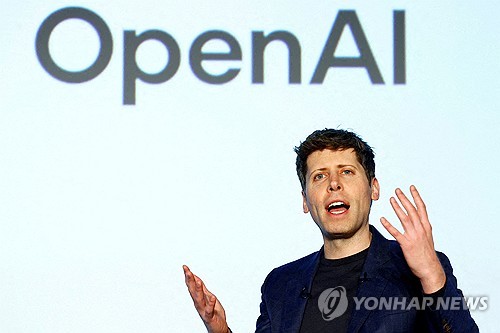
(New York=Yonhap Infomax) As the artificial intelligence (AI) sector continues to absorb massive amounts of capital, concerns are mounting that global pension funds are becoming hostages to the so-called 'too big to fail' phenomenon.
With enormous investments pouring into AI infrastructure, the proportion of debt financing has surged, and a significant portion of pension fund assets is now tied up in AI-themed investments. Should the much-discussed 'AI bubble' in financial markets burst, governments worldwide may be forced to step in with bailouts to cover pension fund losses.
Private Credit Exposure Surges in AI Infrastructure
Pension funds are particularly exposed to the private credit sector within AI infrastructure investment. According to Morgan Stanley, approximately $3 trillion is expected to be invested in building out AI infrastructure—including data centers and power grids—by 2028. Of this, $1.4 trillion will be funded by hyperscalers’ own cash flows, but the remainder will need to be raised externally, with more than half likely to come from the private credit market.
Private credit exposure to AI infrastructure is rising sharply. UBS estimates that over the past three quarters, about $50 billion per quarter has been supplied to the AI sector via private credit—two to three times the amount raised through public markets during the same period.
UBS’s estimate excludes Meta Platforms Inc.’s $29 billion private credit deal to build an AI data center in Louisiana. Including Meta’s transaction and other large-scale financings, private credit is estimated to account for more than two-thirds of total debt financing in AI infrastructure.
The key issue is that pension funds make up a substantial portion of the private credit market. According to JPMorgan Chase, global private credit assets under management (AUM) surpassed $2.13 trillion at the end of last year. The International Monetary Fund (IMF) reports that pension funds account for about 34% of known private credit fund investments—nearly double the 19% share held by insurers. Some estimates suggest that, including undisclosed investments, pension funds’ share could approach 40%.
This means that as hyperscalers ramp up AI capital expenditures, pension funds are being drawn in deeper, increasing their risk exposure.
Oracle Corp.’s $38 billion in debt financing for data center construction—and the resulting spike in credit default swap (CDS) premiums—clearly illustrates the risky game pension funds are playing.
Gil Luria, head of technology research at U.S. investment firm D.A. Davidson, noted, “Hyperscalers’ infrastructure investments represent the healthy side of the AI boom, but other areas are speculative assets with no end customers. Lenders are pouring capital into AI without proper risk assessment, and if debt quality deteriorates, the impact could ripple beyond the tech sector to the broader economy.”
Harris Kupperman, founder of hedge fund Praetorian Capital, warned, “Data center assets will depreciate twice as fast as revenue, and excessive infrastructure investment will create a heavy debt repayment burden.”
Private Credit Risks and Broad AI Exposure
Private credit is particularly dangerous because crises can emerge suddenly, with little warning. Asset values remain high in normal times and declines are slow to be reflected, but in a crisis, liquidity dries up, creditor negotiations stall, and defaults can occur rapidly.
More concerning is that pension funds are not only exposed to private credit but are broadly tied to the AI theme across asset classes.
In equities, pension funds typically follow index-tracking portfolios, maintaining allocations similar to the benchmark S&P 500 Index with some strategic adjustments. However, as the so-called “Magnificent 7” tech giants now account for about 35% of the S&P 500’s market capitalization, index-tracking strategies have become highly sensitive to the volatility of these stocks.
BlackRock Inc. recently noted in a report, “With this level of concentration, portfolio risk rises significantly when just a few stocks fluctuate.”
In the corporate bond market, pension funds have also increased their exposure and reliance on hyperscalers. To fund AI capital expenditures, hyperscalers have issued a wave of corporate bonds this year. Last week, Amazon.com Inc. issued $15 billion in bonds, while Alphabet Inc. raised $25 billion earlier this month. Last month, Meta issued $30 billion in bonds, and Oracle’s bond issuance reached $18 billion out of its $38 billion in total debt financing.
Pension funds are increasing their exposure to these bonds both directly and indirectly through asset managers. As a result, pension funds now have significant exposure to the AI theme across equities, bonds, private credit, private infrastructure, and real estate.
In other words, big tech firms riding the AI wave have reached a point where they can effectively hold pension funds—representing the retirement savings of millions—hostage. If the AI bubble bursts, sharp declines in stock and bond prices, infrastructure and real estate values, and turmoil in the private credit market would leave governments with little choice but to intervene.
Although OpenAI’s management faced public backlash after calling for a U.S. federal government guarantee, the AI industry has arguably already secured its bailout channel. (Jin Jeong-ho, New York Correspondent)
jhjin@yna.co.kr
(End)
Copyright © Yonhap Infomax Unauthorized reproduction and redistribution prohibited.

